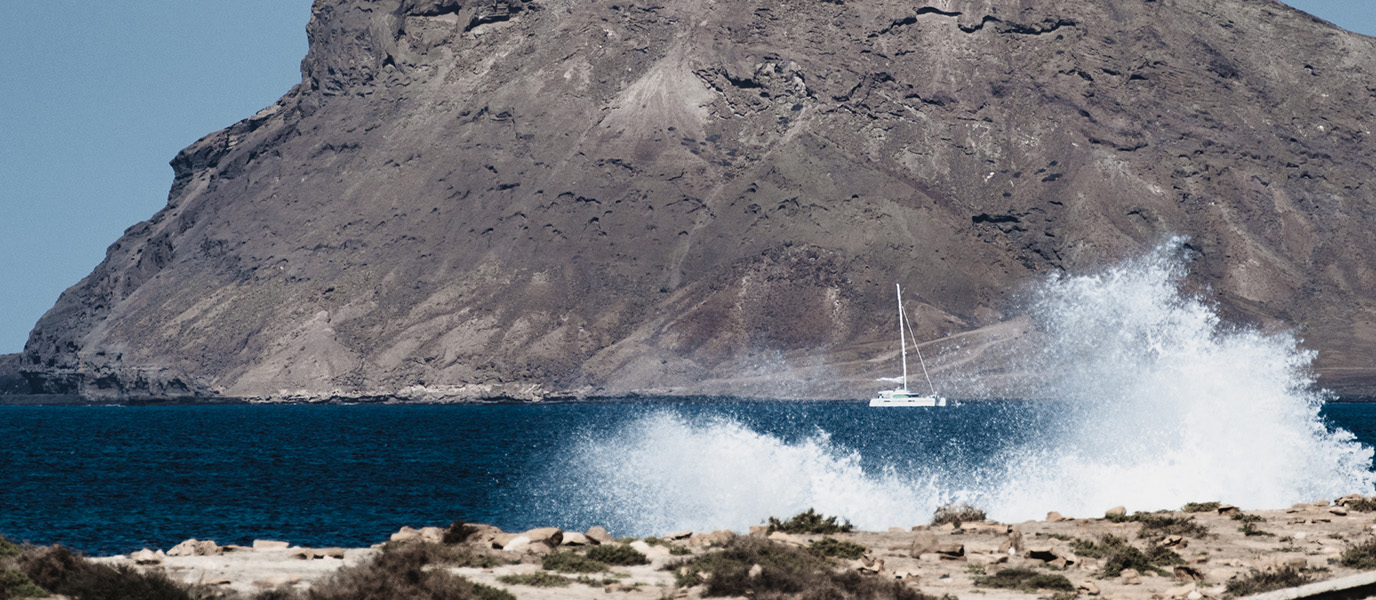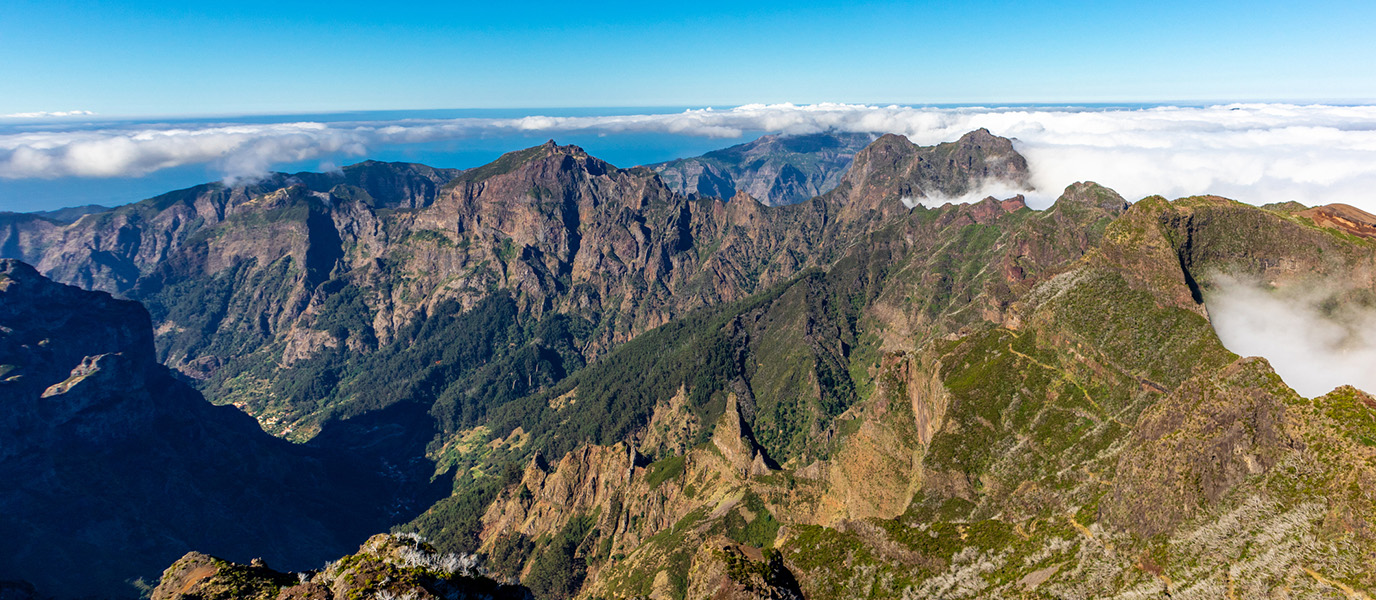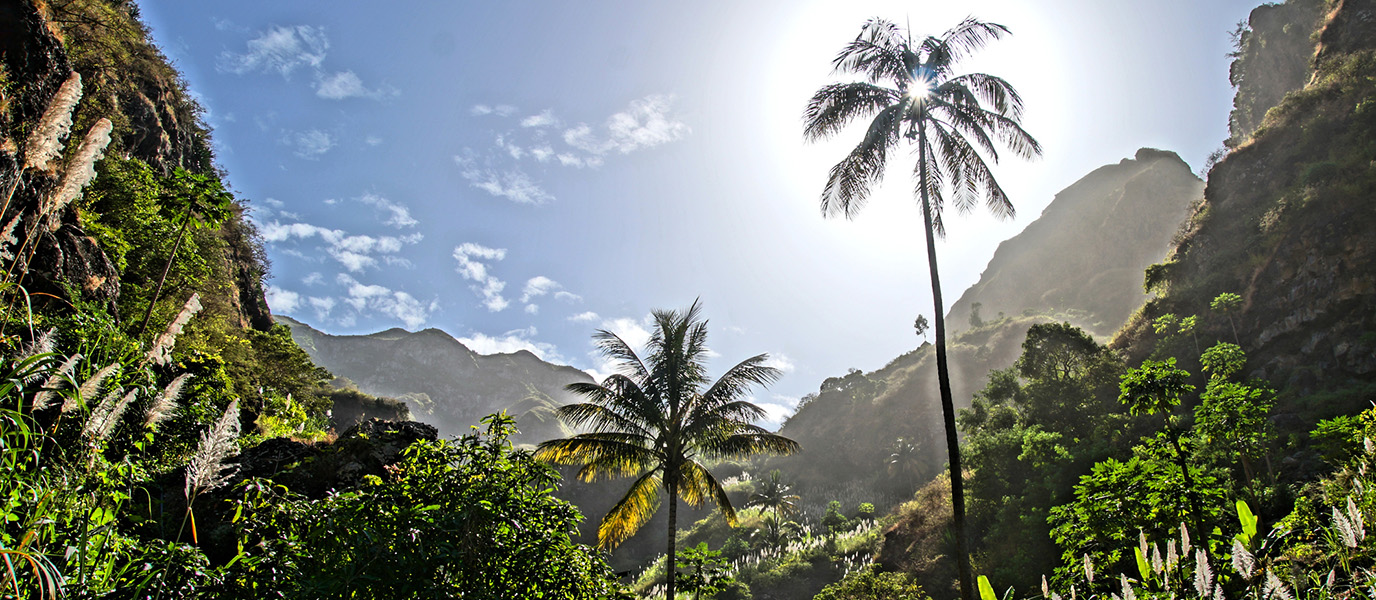Aguas Belas is one of those places that can only be glimpsed from the coast until you cross it by boat and discover the magic that nature has to offer. Between basalt cliffs of volcanic origin, these sea caves have formed lagoons in which the colour of the sea oscillates between green and deep blue, depending on how the sunlight shines.
- Natural Surroundings
- Tips for visiting Ribeira da Barca and Aguas Belas
- What to see and do during your visit
- Sightseeing in the surrounding area
Natural Surroundings
The surroundings of Aguas Belas, in Cape Verde, are the basalt cliffs and other volcanic formations that have shaped a magical landscape. In fact, one of the most famous spots is the Pilon di Nhor Dês, which is made up of hexagonal layers of this mineral very similar to those found in Iceland or Northern Ireland, in what is known as the Giant’s Causeway.
This part of the coast of Santiago was formed by the various eruptions and by the slow cooling that made the basalt take its incredible hexagonal shape, along with other whimsical forms.
Now the high cliffs are full of palm and banana trees and it is easy to see animals from the nearby farmhouses grazing peacefully in certain places.
Most of these rocky beaches are home to coral formations and many fish that swim in and out of the sea caves that have been created by water and wind erosion.
The most famous of Aguas Belas is a grotto called the lagoon, where the sea takes on almost impossible shades of green and blue and where you can swim, snorkel or sit back and enjoy the power of nature.
Tips for visiting Ribeira da Barca and Aguas Belas
There are two ways to get to Aguas Belas: either you hire an all-inclusive tour or when you arrive in Ribeira da Barca you can get a fisherman to take you on a tour of all these sea caves. This is quite easy as many of them have their colourful canoes ready and know every rock that juts out of the sea, along with the deepest secrets of those caves.
The best way to enjoy this incredible view is to wear water shoes for the rocks and a swim in the lagoon, but be sure to bring a snorkelling mask, some water and a towel.
You can arrange for the fisherman to prepare grilled fish for you on one of the beaches where the boats stop, to enjoy an almost untouched place, or return to Ribeira for lunch.
Nor should you forget the sun cream because the mere reflection of the water on the volcanic rock is enough to burn your skin as well as medicine for the boat, if you get seasick.
What to see and do during your visit
The first thing to do is take in the striking sight of the towering black cliffs as you travel by boat on your way to Aguas Belas. The feeling of being incredibly small is heightened by the silence of the place, broken only by the sound of the sea and the striking contrast between the deep blue water and the dark rock.
It is a one and a half hour trip and boats usually sail very close to the shore, so you can easily feel the vastness of the place.
It is also just the prelude to the magical image of the Pilon di Nhor Dês, which emerges from the surface of the ocean with almost supernatural force. Boats often stop here for a short while to allow you to see it from different angles and take photos.
The next stop is usually the largest sea cave in the area, which is the lagoon, where an incredible swimming area opens up with bright colours depending on how much sunlight is pouring in. This is a good place to take a dip in the sea you’ve been surfing on, do some snorkelling and enjoy the wonders that these waters hold.
There is usually a stop at a black sand beach where you can have lunch on the shore or just have a swim in place that feels almost untouched.
Sightseeing in the surrounding area
After enjoying Aguas Belas we can visit the nearby villages, such as Ribera da Barca or Assomada, and enjoy some of its beaches, which are also worth a visit.
If you feel like walking, very close to here there are several incredible hiking trails through the Serra Malagueta, and also some hikes to do that will take you to small viewpoints on this coast, such as the one that leaves from the Praça da Assomada and leads directly to the caves of Aguas Belas along the cliff.





























































